Requesting a review
Simple! In general: check out How to get horizontal review in the W3C Guidebook
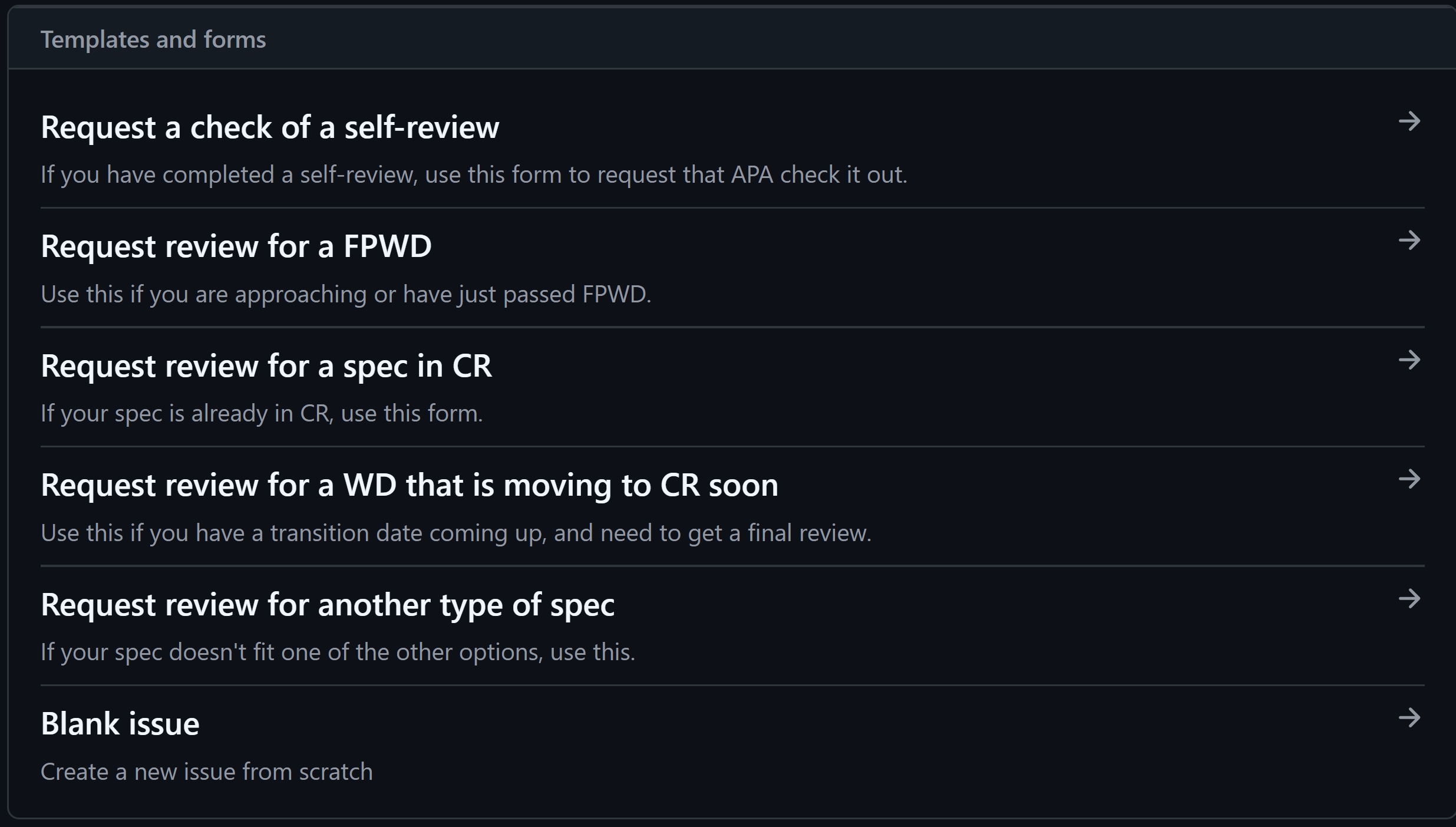
TPAC 2025
Kobe, Japan & online
10–14 November 2025
Simple! In general: check out How to get horizontal review in the W3C Guidebook

Next we'll point out some resources (recently updated) and points of contact.
This is the same diagram as on the previous slide, but with the addition of feedback lines from your specification, to the APA WG review stage which, in turn, feeds back to: the Accessibility User Requirements from RQTF and Making Content Usable from COGA TF; the FAST, and the FAST Checklist.
Example question (4 of 7):
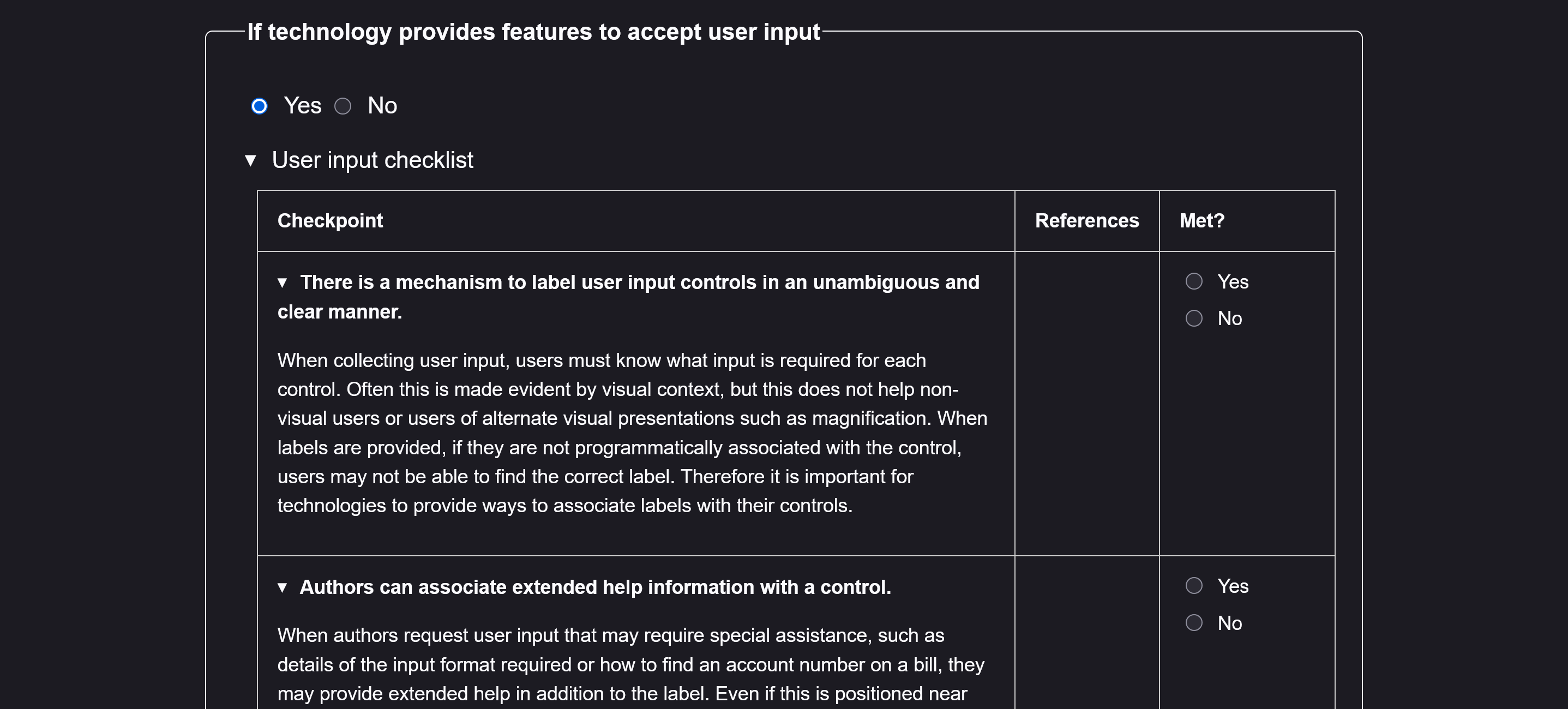
Excerpt of the FAST Checklist, showing the start of the section titled "If technology provides features to accept user input", with a couple of checlist items shown under this:
The section as a whole has a set of radio buttons to indicate whether it's applicable. Each checlist item has further explanatory text, an optional external reference, e.g. to WCAG, and a set of yes/no radiobuttons to state whether the checklist item has been met.
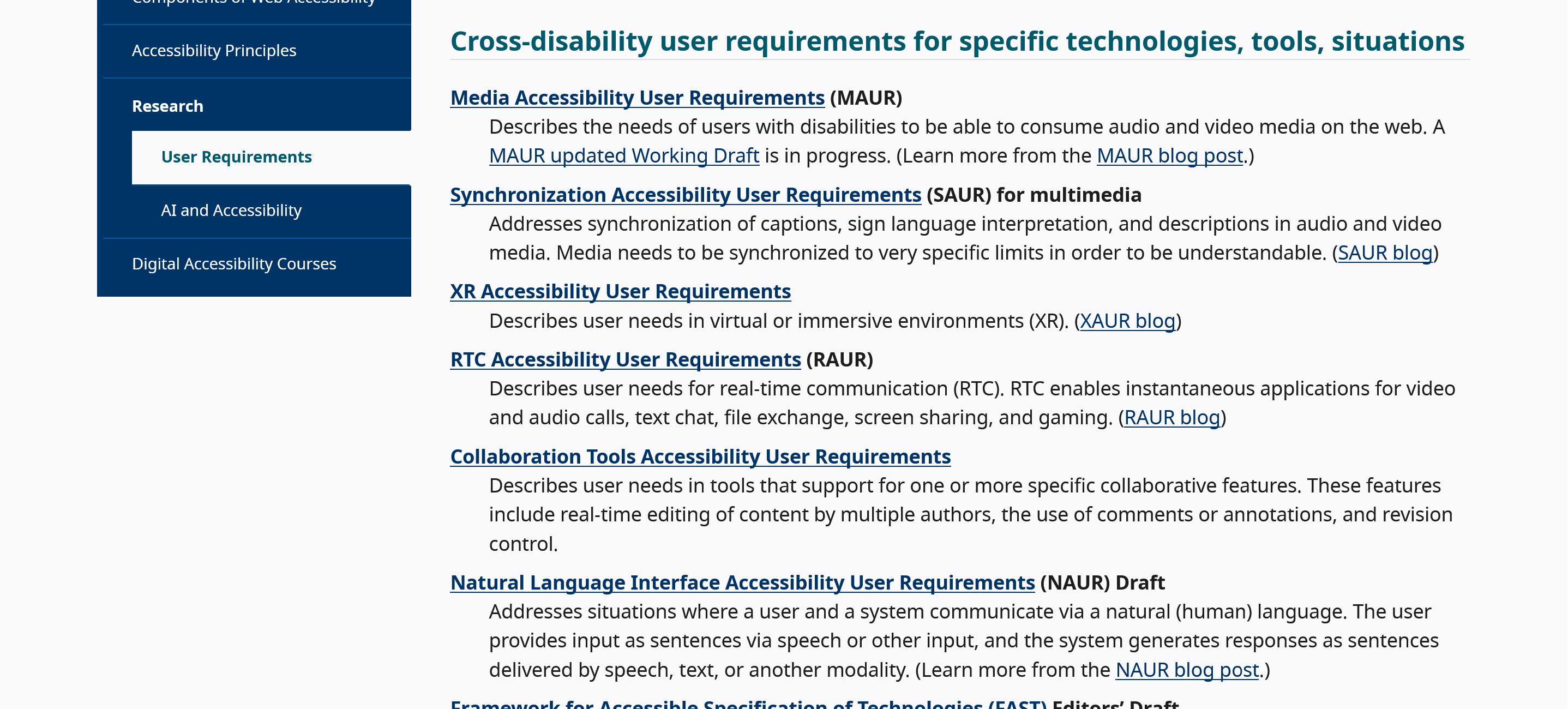
From the Web Accessibility Initiative (WAI) site…
WAI continues to analyze research and document user needs in several areas. The documents below:
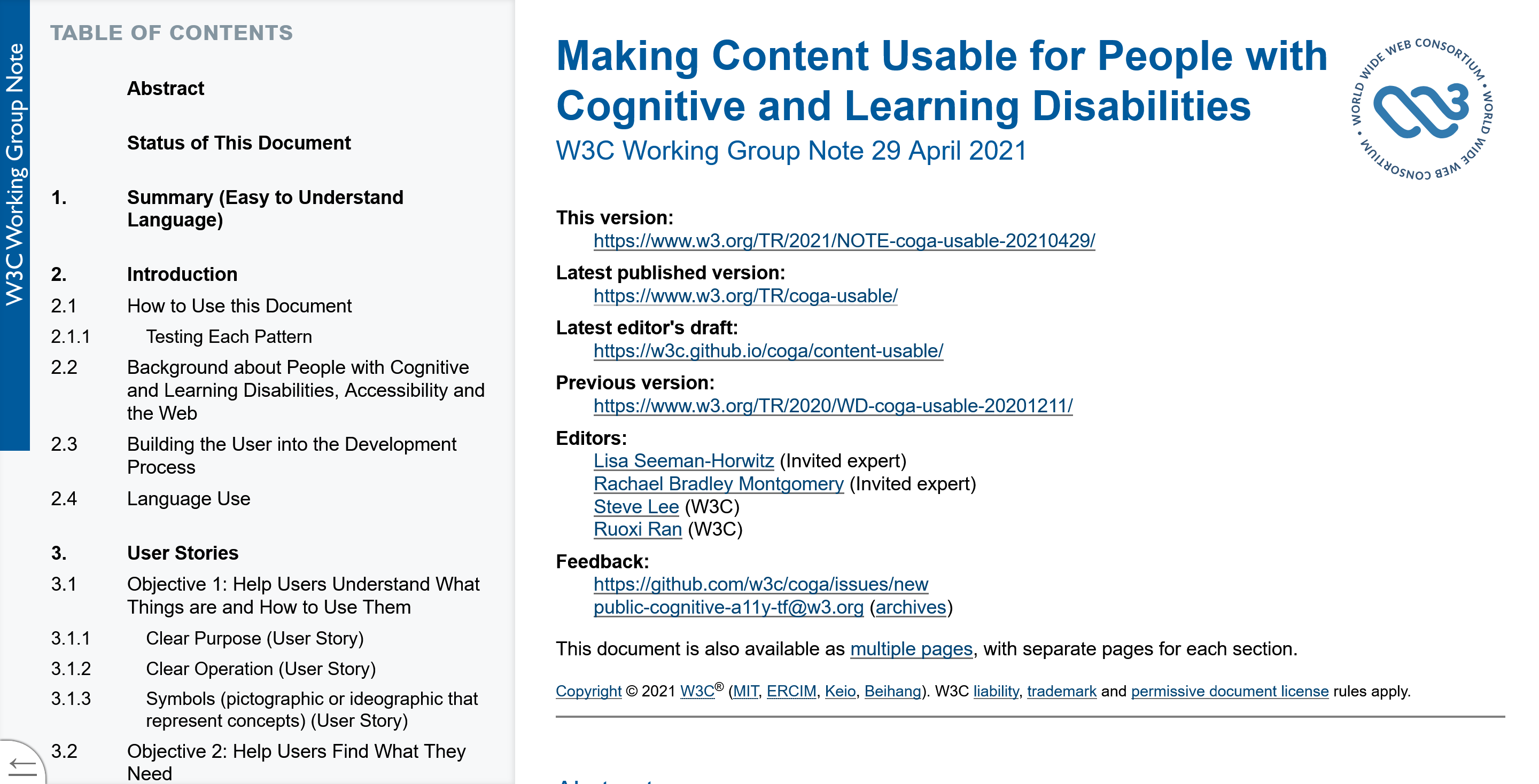
This document is for people who make web content (web pages) and web applications. It gives advice on how to make content usable for people with cognitive and learning disabilities. This includes, but is not limited to: cognitive disabilities, learning disabilities (LD), neurodiversity, intellectual disabilities, and specific learning disabilities.
Key deliverable: use cases
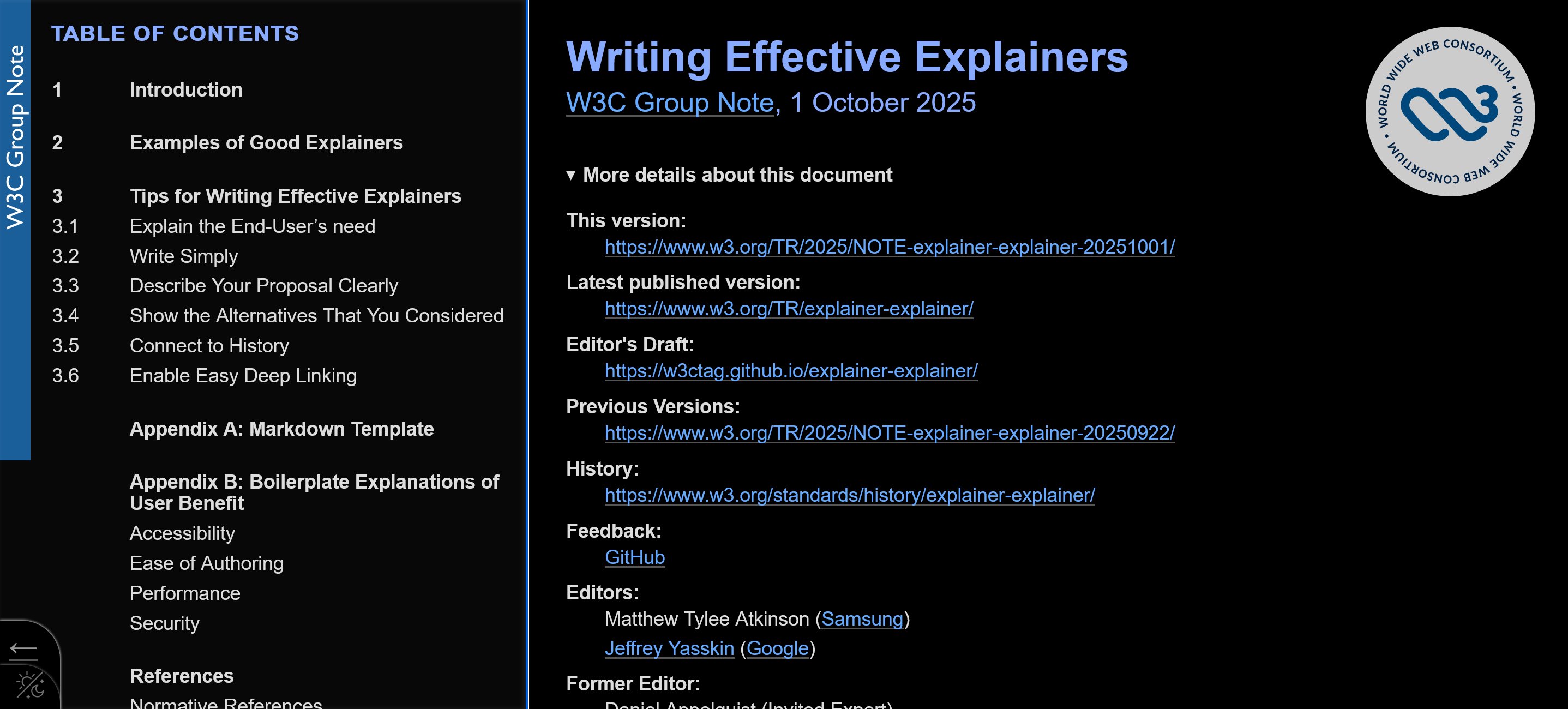
The Compute Pressure API is focused on improving the user experience. There are two ways in which applications that build on the API can positively impact accessibility.
As a consumer of the API, it's important to consider both of these opportunities. Here are some examples:
…and ongoing updates
However…
So we are rebooting FAST to be more W3C-specific…
| Feature | Spec | Author | UA | AT | User |
|---|---|---|---|---|---|
| Alternative content | Allow provision of alternative content | Provide content | Expose content in some way | Render content | Be aware of possible content |
We may not be talking about the alt attribute.
We want to help you promote the accessibility of…
Acknowledgement: thanks to Peter Korn for the "building it in vs. bolting it on" concept.
If you would like to join the FAST TF, please contact us.